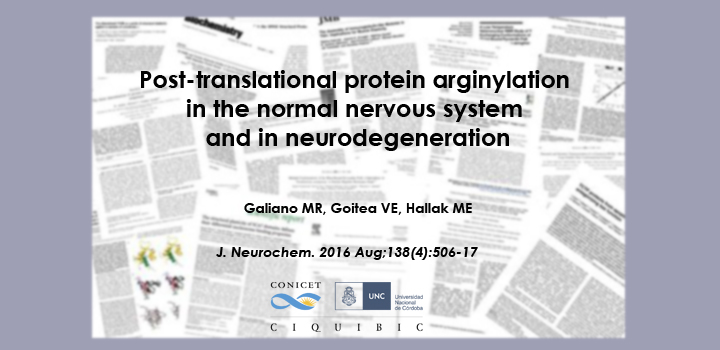Galiano MR et al. 2016, J. Neurochem.
Post-translational arginylation of proteins is an important regulator of many physiological pathways in cells. This modification was originally noted in protein degradation during neurodegenerative processes, with an apparently different physiological relevance between central and peripheral nervous system. Subsequent studies have identified a steadily increasing number of proteins and proteolysis-derived polypeptides as arginyltransferase (ATE1) substrates, including β-amyloid, α-synuclein, and TDP43 proteolytic fragments. Arginylation is involved in signaling processes of proteins and polypeptides that are further ubiquitinated and degraded by the proteasome. In addition, it is also implicated in autophagy/lysosomal degradation pathway. Recent studies using mutant mouse strains deficient in ATE1 indicate additional roles of this modification in neuronal physiology. As ATE1 is capable of modifying proteins either at the N-terminus or middle-chain acidic residues, determining which proteins function are modulated by arginylation represents a big challenge. Here, we review studies addressing various roles of ATE1 activity in nervous system function, and suggest future research directions that will clarify the role of post-translational protein arginylation in brain development and various neurological disorders. Arginyltransferase (ATE1), the enzyme responsible for post-translational arginylation, modulates the functions of a wide variety of proteins and polypeptides, and is also involved in the main degradation pathways of intracellular proteins. Regulatory roles of ATE1 have been well defined for certain organs. However, its roles in nervous system development and neurodegenerative processes remain largely unknown, and present exciting opportunities for future research, as discussed in this review.
Autores: Galiano MR, Goitea VE, Hallak ME
Artículo: Galiano MR et al, J. Neurochem. 2016 Aug;138(4):506-17. doi: 10.1111/jnc.13708



